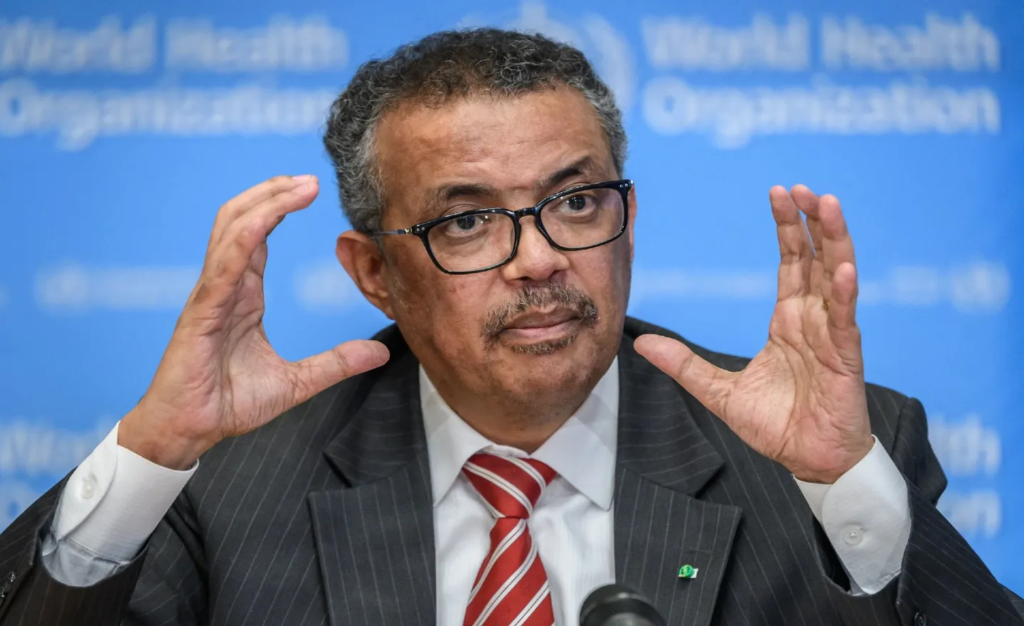The outbreak of a deadly disease known as the Marburg virus in Tanzania has sparked widespread concern, with nine people reported dead and others under investigation.
Dubbed the “eye-bleeding disease” due to one of its most alarming symptoms, the virus has a staggering 90% mortality rate, making it one of the deadliest known pathogens.
Health agencies in Africa and global organizations like the World Health Organization (WHO) are working tirelessly to contain the outbreak and prevent it from escalating into a larger health crisis.
The Marburg Virus: A Deadly Ebola-like Disease
The Marburg virus, a highly infectious disease similar to Ebola, is the cause of the recent outbreak in Tanzania. First identified in 1967, Marburg is a rare but severe hemorrhagic fever that belongs to the same family of viruses as Ebola.
Its symptoms are devastating and include high fever, severe headache, muscle aches, abdominal pain, diarrhea, vomiting, and internal bleeding that can lead to visible blood oozing from the eyes, gums, or other orifices.
This recent outbreak has been traced to the Kagera region, located in northern Tanzania. Health officials confirmed that ten people have tested positive for the virus, and nine of them have succumbed to the disease, reflecting its extraordinarily high fatality rate.
Read : Tanzania: The Land of Natural Wonders and Cultural Richness
The disease spreads through direct contact with bodily fluids of infected individuals, contaminated surfaces, or through certain species of bats that act as reservoirs for the virus.
Read : once-deadliest diseases that have been completely eradicated
Dr. Ngashi Ngongo, a professor of epidemiology at the University of Lubumbashi, highlighted the alarming case fatality rate, stating, “The figures reflect the very high case fatality of Marburg.” He also emphasized the urgency of containing the virus to prevent further spread, given its potential to cause large-scale outbreaks.
Efforts to Contain the Outbreak
Local and international health authorities have mobilized swiftly to combat the outbreak. The Africa Centre for Disease Control (CDC), in collaboration with WHO and other partners, has deployed teams to the affected areas.
These teams include experts who recently dealt with a similar outbreak in a neighboring country, equipping them with valuable experience and knowledge to handle the crisis.
Dr. Ngongo, speaking at an online briefing, revealed that 31 tests had been conducted, with two confirmed cases and 29 returning negative results.

While this offers a glimmer of hope, the situation remains precarious as more cases are likely to emerge. WHO has issued a warning that additional infections could surface, given the nature of the virus and its mode of transmission.
Public health measures are being intensified in the Kagera region to curb the spread of the virus. These include contact tracing, isolation of suspected cases, and public awareness campaigns to educate the local population about preventive measures.
Healthcare workers on the ground are working under challenging conditions to provide care to patients while safeguarding themselves from infection.
The response has also been bolstered by neighboring countries, which are on high alert for potential cross-border transmission. Dr. Ngongo noted that the teams working in Tanzania include personnel who had successfully countered a recent outbreak, bringing valuable expertise to the effort.
The Broader Implications and Pandemic Fears
The outbreak of the Marburg virus in Tanzania has reignited fears of another potential pandemic. With the world still recovering from the COVID-19 pandemic, the emergence of another highly infectious disease with a high mortality rate is a stark reminder of the vulnerabilities in global health systems.
While Marburg outbreaks have historically been contained to specific regions, the increasing interconnectedness of the world through travel and trade heightens the risk of its spread beyond Africa. This underscores the importance of rapid and coordinated responses from the international community.

The outbreak also highlights the need for continued investment in healthcare infrastructure and research, particularly in regions prone to zoonotic diseases. Strengthening surveillance systems, equipping healthcare workers, and improving access to medical supplies and facilities are critical steps to prevent future outbreaks from spiraling out of control.
As of now, there is no approved vaccine or antiviral treatment for Marburg virus disease. However, researchers are exploring experimental vaccines and therapies, some of which have shown promise in preclinical trials. The current outbreak serves as a stark reminder of the urgent need to accelerate the development of these medical countermeasures.
In the meantime, public health officials are urging individuals in affected regions to practice stringent hygiene measures, avoid contact with bats and other potential carriers, and report any symptoms of the disease promptly.
Communities are also being encouraged to avoid traditional burial practices that involve direct contact with the deceased, as these have been identified as significant contributors to the spread of the virus in past outbreaks.
A Call to Action
The Marburg virus outbreak in Tanzania is a wake-up call for the global community. While the immediate priority is to contain the virus and prevent further loss of life, it is equally important to address the underlying factors that contribute to the emergence and spread of such diseases.

Climate change, deforestation, and encroachment on wildlife habitats are driving increased interactions between humans and animals, creating new opportunities for zoonotic diseases to emerge. Addressing these issues requires a multidisciplinary approach that combines public health, environmental conservation, and sustainable development.
The international community must also recognize the critical role of global solidarity in responding to health crises. Sharing resources, expertise, and funding can make a significant difference in the ability of affected countries to manage outbreaks and protect their populations.
As the situation in Tanzania continues to evolve, the hope is that the swift and coordinated response from health authorities will bring the outbreak under control. For now, the world watches with concern, hoping that the lessons learned from previous epidemics will guide efforts to prevent another global health crisis.

